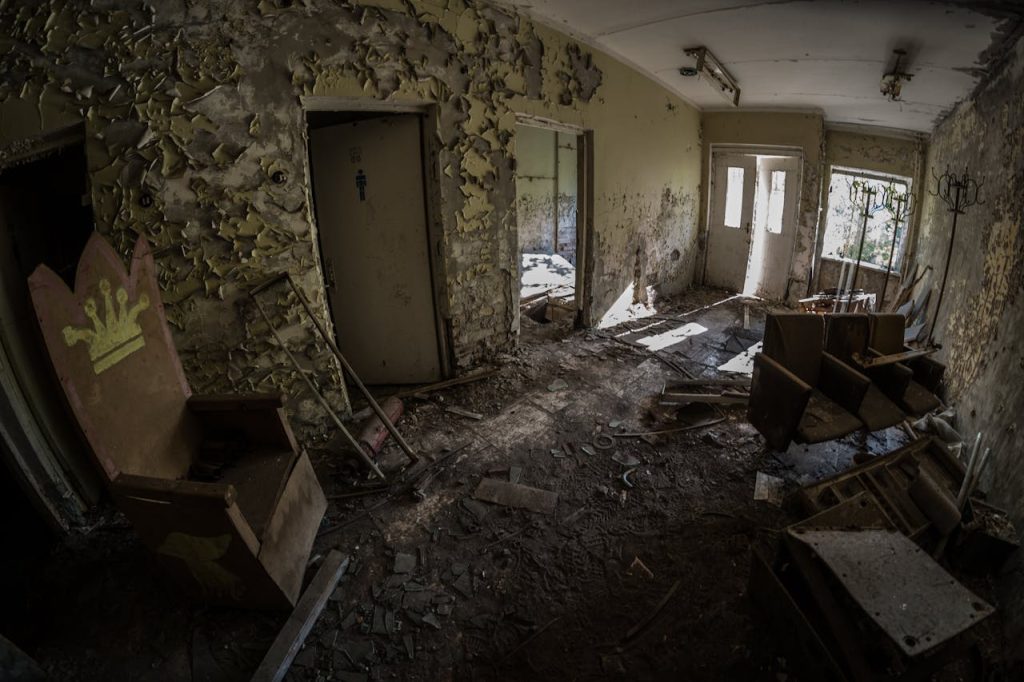Understanding Poor Conditions: What Does It Mean?
A house in poor condition means more than just needing a fresh coat of paint or new carpets. We mean major issues that affect the home's safety and value, such as structural damage, fire-risk wiring, and unreliable plumbing. In many cases, these problems have been left unaddressed for so long that the cost of repairs adds up beyond what most homeowners can handle.
Other red flags are serious foundation issues, a bad roof, extensive mold, termite damage, and hazards like asbestos and lead paint. When these major repairs pile up, the home's value drops. Most buyers struggle to take on the cost of extensive renovations.
Common Signs Your Property Is Distressed:
• Water damage or mold: This isn’t just an eyesore. It can impact health and the home’s structural integrity.
• Foundation cracks or shifting: A big red flag for buyers.
• Outdated electrical systems: Not only are they inconvenient but also a safety concern.
• Roof damage: Missing shingles or leaks that need immediate attention.
• Cosmetic issues: Peeling paint, broken windows, and worn-out flooring add to the list.
If your home suffers from these problems, it's time to plan your sale. Don’t worry—there’s a buyer out there, even if the place isn’t pristine.
Evaluating Your Property: How to Get a Fair Price
Pricing a distressed property isn’t as straightforward as a typical home sale, but it’s all about finding that sweet spot. You don’t want to undersell, but you also have to be realistic.
Property Valuation Techniques:
• Comparative Market Analysis (CMA): Look at nearby homes that recently sold, adjusting for your property’s condition. Keep in mind that a house in poor shape is going to be valued lower than similar homes in better condition.
• Hire a Real Estate Agent: An agent familiar with distressed properties can offer insights into the local market. They can also explain how your home's condition affects its price.
• Professional Appraisal: Not sure where to start? An appraisal gives a precise valuation based on current market conditions and the home’s state.
Factors to Consider:
• Location: A great neighborhood can make up for some of the home’s flaws.
• Repair Costs: Balance the cost of repairs with how much it will add to the home’s value. For instance, replacing a roof could cost you around $12,000, but the return might not justify the investment if other areas need work.
The As-Is Sale Option
Selling a house as-is can be a lifesaver, especially when you can’t afford to fix it up or you need to sell quickly. Listing it as-is tells buyers exactly what they’re getting, no surprises, and no repairs required on your end. This approach can appeal to real estate investors and cash buyers. They are willing to take on projects and see the home's potential, despite its flaws.
It saves you the hassle and cost of repairs. This is especially helpful if the home needs major work. This includes fixing structural issues, replacing the roof, and updating the old wiring and plumbing. However, keep in mind that selling as-is may limit your buyer pool and result in lower offers, as buyers will factor in the cost of repairs. Sellers with distressed properties often prefer the speed of a quick sale. It outweighs the trade-offs of avoiding extensive repairs.
Benefits of Selling As-Is:
• Saves time and money: Skip the repairs and list the property as is. This is perfect if you need to move quickly or lack the funds to make major fixes.
• Attracts cash buyers: Real estate investors and house flippers buy as-is properties. They often jump at the chance to buy them.
• Quick sale: As-is properties sell faster. They appeal to buyers who can make repairs.
However, as-is sales might come with a lower asking price. Buyers will factor in repair costs when making an offer, so expect some negotiation. Pro tip: Work with companies like Doctor Homes, which specializes in fast cash offers for distressed properties.
Disclosure Requirements and Home Inspection Tips
Even when selling a home as-is, transparency is key. Most states require you to disclose any known issues, and buyers will likely request an inspection.
What needs to be disclosed?
• Structural problems: Foundation issues or roof leaks need to be disclosed upfront.
• Plumbing and electrical issues: If it’s broken, the buyer should know.
• Health hazards: Mold, asbestos, or lead paint fall under required disclosures.
• Major repairs: Any past repairs that didn’t fully resolve the problem should be noted.
Home Inspection Tips:
Even with an as-is sale, an inspection can help buyers understand what they’re getting into. Be prepared for negotiations over major issues. A pre-listing inspection could find big problems before you list. You could then fix them or adjust your price.
Repair vs. Replacement: What’s Worth Fixing?
One of the biggest questions homeowners face is whether to make repairs before selling. Some fixes offer a better return on investment than others, while some aren’t worth the time or cost.
Repairs Worth Making:
• Safety issues: Fixing faulty wiring or addressing plumbing leaks is usually worth the cost. It reassures buyers and might prevent larger issues down the road.
• Cosmetic Upgrades: Fixing broken fixtures or adding a fresh coat of neutral paint can help a lot. For example, new paint can increase the home’s value by up to $8,000.
When to Skip Repairs:
• Major Renovations: Large-scale projects, like a full kitchen remodel, often cost more than they’re worth. For example, a mid-range kitchen remodel could cost $79,000, but you might only see half of that in the final sale price.

Attracting Cash Buyers
Cash buyers are gold when selling a distressed property. These buyers are often real estate investors looking for a fixer-upper or a quick flip. The best part? They’re usually ready to close fast and aren’t reliant on mortgage approvals.
How to Market to Cash Buyers:
• Be upfront about the condition: Highlight the potential without hiding the flaws. Honest descriptions will attract serious buyers.
• Focus on potential: Even a house in bad shape has potential. Use photos to showcase what could be fixed or upgraded, helping buyers visualize the possibilities.
Companies like Doctor Homes make cash offers for distressed properties. This could make your sale quicker and less stressful. Cash buyers typically have fewer contingencies, meaning they can close fast, sometimes within a few days.
Conclusion
Selling a house in poor condition may seem overwhelming, but with the right strategy, it doesn’t have to be. Whether you choose an as-is sale, make minor repairs, or work with a cash buyer like Doctor Homes, each option has its advantages. Think about your timeline, the local real estate market, and your financial goals before making a decision. In a hot market, you might sell quickly without repairs, while a few strategic upgrades could help boost your home’s appeal in a slower market.
Take your time to evaluate all your options, and you can move forward confidently, knowing you’ve made the best choice for your situation.
FAQs about How to Sell a House in Poor Condition
What are the common home issues that affect the value of a distressed property?
Common home issues that lower a distressed property's value include water damage, mold, foundation cracks, old wiring, and roof leaks. These problems can lead to safety concerns and expensive repairs, making the home less attractive to buyers.
Other issues might include termite damage, old plumbing systems, structural instability, and neglected exterior features like damaged siding or broken windows. Additionally, homes with out-of-date heating, ventilation, or air conditioning (HVAC) systems can also see a dip in value as these systems often need costly replacements.
How can I determine the fair market value of my house in poor condition?
To get a fair market value, you can start with a comparative market analysis (CMA), which looks at similar properties in your area that have sold recently. This can give you an idea of how much your home might be worth based on its current condition.
Hiring a real estate agent experienced in distressed properties can help. They’ll know what buyers will pay for homes needing major repairs. Additionally, consider getting a professional appraisal, which will provide an unbiased value based on your property’s size, location, and condition.
What are the benefits of selling a house as-is?
Selling as-is saves time and money on repairs, attracts cash buyers, and often results in a quicker sale.
What should I expect from a home inspection for a distressed property?
Buyers will focus on structural and safety issues. Be ready to discuss major problems, like roof damage or electrical issues.
How can I attract cash buyers for my poor-condition house?
Be honest about the home’s condition, highlight its potential, and consider working with companies like Doctor Homes, which specialize in buying distressed properties quickly.




